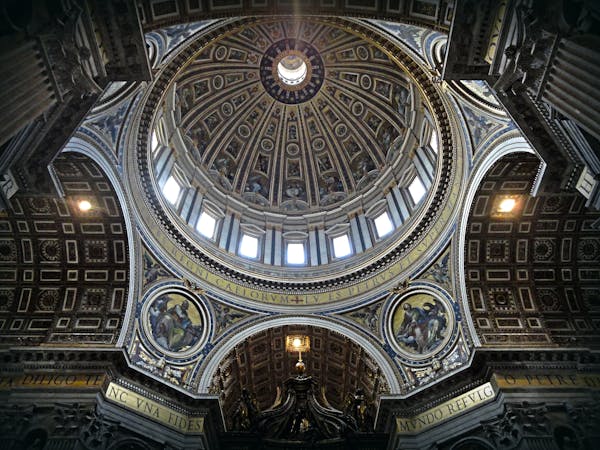Visiting the Vatican is a highlight for many travelers, but securing entry can be daunting. With these essential tips, you’ll navigate the ticketing process effortlessly. Discover strategies to save time, avoid crowds, and enhance your overall experience. Don’t miss out on the art and history waiting for you—read on to unlock the secrets to a smoother visit.
Essential tips for securing Vatican tickets to enhance your visit
When planning your visit, it’s natural to wonder, do you need tickets for the Vatican. The answer is yes, especially if you wish to access iconic landmarks like the Vatican Museums and the Sistine Chapel. Visitors need a ticket not only to enter these attractions but also to ensure a smoother experience, particularly during busy periods.
This might interest you : Beaujolais : your guide to france's charming wine region
Types of Tickets and What They Offer
There are two primary ticket options to consider:
-
Standard Tickets: These are the most basic tickets, allowing access to the Vatican Museums and the Sistine Chapel. Currently priced at €17 for adults and €8 for students, they represent an affordable option for self-guided exploration.
Also to discover : Top Destinations to Discover the Rich History of British Maritime Exploration
-
Skip-the-Line Tickets: For just €5 extra, you gain faster entry, bypassing queues that can stretch for hours during peak seasons. These are especially valuable during events like the Jubilee year, where the influx of pilgrims significantly increases visitor numbers.
Families, students, and certain eligible groups may benefit from discounts or reduced ticket prices, so it’s worth checking these options beforehand.
Why Booking Online is a Game-Changer
Advance online booking has become essential for Vatican entry. Not only does it guarantee your spot—an important consideration as tickets can sell out weeks or even months in advance—it also saves you the frustration of waiting in day-of lineups. This approach is particularly recommended for high-demand periods, such as holidays and key church events.
Online platforms also provide options for modifications or refunds, offering some flexibility should your plans change. However, always review the specific policies before purchasing.
Additional Tips for a Seamless Experience
- Guided Tours: Opting for guided experiences can elevate your visit. These include insights about the Vatican’s rich history, art, and architecture while often pairing with skip-the-line access. Options range from general museum tours to specialized experiences like climbing St. Peter’s Dome.
- Omnia Cards and Combined Passes: These passes offer bundled benefits such as access to multiple attractions, public transport, and skip-the-line privileges for the Vatican. A great way to maximize your time and budget if you’re exploring more of Rome.
- Timing is Key: Early mornings or late afternoons generally have fewer crowds, offering a more relaxed experience. Additionally, consider visiting on a weekday to avoid weekend rushes.
Planning ahead ensures you not only secure a ticket but also enjoy the Vatican’s treasures without unnecessary stress.
Tips for Navigating the Vatican Experience
Best Times to Visit the Vatican for Fewer Crowds
If you’re aiming to avoid long lines and enjoy a more tranquil experience, timing your visit to the Vatican is key. Early mornings or late afternoons on weekdays are generally less crowded, especially during the off-season months of November through February. Visitors often find midweek days to be calmer, as weekends and holidays attract larger crowds. Keep in mind that Pope-related events, such as the Wednesday Papal Audience, can significantly increase visitor numbers.
For those who value exclusivity, consider visiting in the evening during special night openings, often held seasonally. Although these slots may come with higher ticket prices, they promise a serene atmosphere, ideal for absorbing the splendor of the Vatican Museums and the Sistine Chapel. A carefully timed arrival can transform your exploration into a more personal and unforgettable experience.
Different Guided Tour Options and Their Benefits
Navigating the vast expanse of the Vatican can feel overwhelming, but guided tours offer clarity and insight, tailored to all levels of interest. From classic tours covering highlights like the Sistine Chapel and St. Peter’s Basilica to specialized journeys exploring the Vatican Gardens or hidden gems, there’s something for everyone. Opting for a skip-the-line guided tour can save precious time, allowing you to bypass lengthy queues.
Private and small group tours provide an intimate setting, often engaging visitors in lively discussions about the Vatican’s art, history, and cultural significance. Alternatively, audio-guided tours offer flexibility, enabling you to explore at your own pace while still gaining in-depth information. Guided tours are an investment that not only saves time but deepens your grasp of the Vatican’s rich heritage.
Family-Friendly Tips for Visiting the Vatican With Children
Exploring the Vatican with little ones can be an enriching experience if planned thoughtfully. Start by selecting kid-friendly tours, which simplify complex historical narratives into engaging stories children can enjoy. Many tour providers cater specifically to young audiences by introducing interactive games and activities during the visit.
When visiting with kids, plan shorter visits to focus on must-see highlights like the Sistine Chapel or St. Peter’s Basilica. Bring along snacks and water because navigating the extensive grounds can be tiring. Additionally, the Vatican Museums have a family corner with resources designed to make the visit smoother for parents with young children. Practical steps like purchasing skip-the-line tickets and choosing less crowded morning slots can significantly enhance their comfort.
Lastly, mind the dress code, even for children, to ensure entry to sacred areas like the Sistine Chapel. A little preparation goes a long way in making your family’s Vatican adventure both educational and enjoyable.
Important considerations for your Vatican visit
Tips for maximizing your visit to the Vatican Museums
To fully enjoy your experience at the Vatican Museums, planning ahead is essential. Tickets to this world-renowned attraction often sell out quickly, sometimes months in advance, particularly during peak travel seasons or special events such as the Jubilee year. Booking well in advance ensures entry and minimizes last-minute stress. Opting for skip-the-line tickets can save valuable time, allowing visitors to bypass lengthy queues, especially during busy hours.
If a guided experience is more appealing, consider booking a professional tour. These tours not only include fast-track entry but also provide historical context and in-depth knowledge about showcased masterpieces, such as Michelangelo’s iconic ceiling in the Sistine Chapel. For budget-conscious travelers, self-guided visits are a feasible option, enhanced with an audio guide to grasp the essential details on the art and architecture within.
Overview of accessibility options for visitors with disabilities
The Vatican Museums take steps to be inclusive and accessible for visitors with disabilities. Designated wheelchair routes and elevators are available to navigate the extensive grounds more comfortably. To accommodate these visitors, wheelchair rentals are offered on-site at no additional cost, and some pathways have been optimized for ease of movement.
Additionally, those with mobility challenges can benefit from discounted entry or even free tickets upon presenting valid documentation. For a smoother experience, contacting the Vatican Museums in advance is strongly encouraged to arrange any specific support required. It’s worth noting that certain areas, such as the Vatican Gardens, may have limited accessibility due to uneven terrain.
Dress code and visitor etiquette for respectful engagement
Visiting the Vatican is not just a cultural journey but also a deeply religious experience, and adhering to its strict dress code is mandatory. Visitors must wear attire that covers their shoulders and knees as a sign of respect. This policy is enforced across all sacred sites, including St. Peter’s Basilica and the Sistine Chapel, so plan your outfit accordingly to avoid being turned away. Lightweight shawls or scarves can be useful for covering up when needed, especially during summer months.
Etiquette extends beyond dress; maintaining a quiet and respectful demeanor is equally important. Refrain from loud conversations or disruptive behavior, particularly in spaces used for prayer or contemplation. Photography, while generally permitted in the museums, is prohibited in certain areas like the Sistine Chapel, ensuring that the sanctity of such spaces is preserved.
By following these guidelines and preparing ahead, visitors can ensure a seamless, rewarding, and respectful experience at one of the world’s most significant cultural and religious landmarks.





